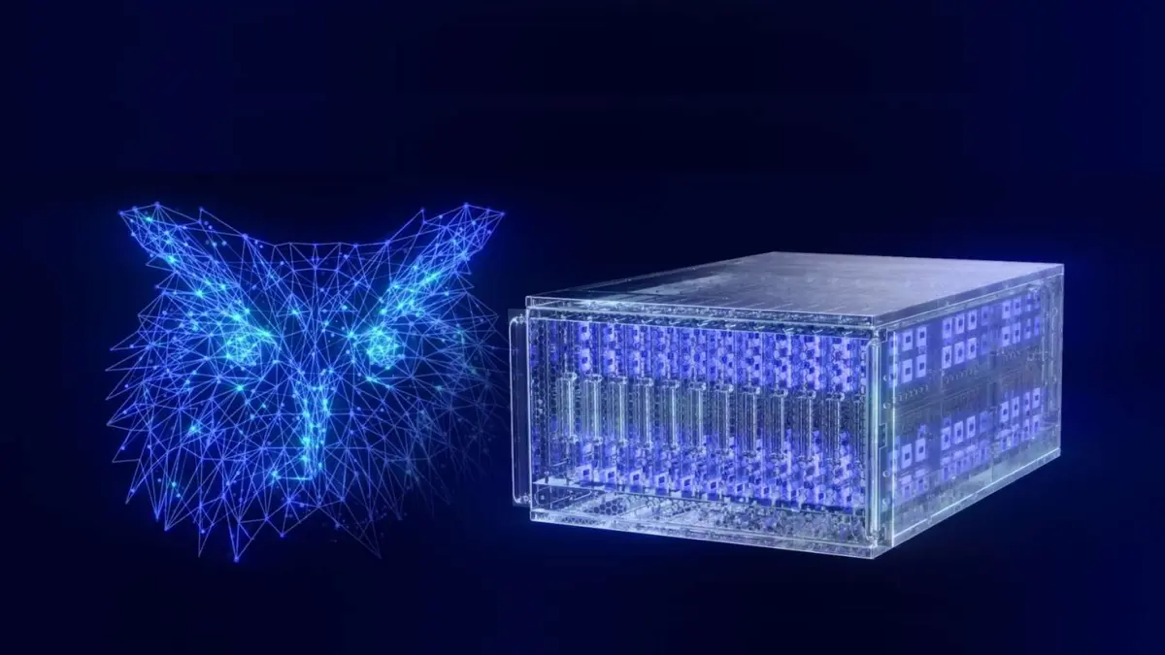





INNOVATION
World’s largest neuromorphic computer by Intel works like human brain
Intel's Hala Point neuromorphic computer
Powering Hala Point is Intel’s Loihi 2 neuromorphic processor that represents a significant upgrade over its predecessor, Pohoiki Springs.
Intel has announced the launch of the world’s largest neuromorphic computer system, Hala Point. Initially deployed at Sandia National Laboratories in New Mexico, the computer mimics the human brain in processing information.
While unveiling Hala Point, Intel said this breakthrough could give a big boost to artificial intelligence (AI) research.
As per the company, Hala Point processes information 50 times faster and uses 100 times less energy than traditional computing systems. Through this, Intel aims to make the use of AI more sustainable.
“The computing cost of today’s AI models is rising at unsustainable rates. The industry needs fundamentally new approaches capable of scaling,” said Mike Davies, director of the Neuromorphic Computing Lab at Intel Labs.
High-end performance
Traditional computers process information linearly. They rely on central processing units (CPUs) and graphics processing units (GPUs).On the other hand, neuromorphic computers are inspired by the way the human brain works. They use networks of artificial neurons and synapses, similar to the biological brain.
This structure helps neuromorphic computers process many calculations simultaneously. It is capable of processing up to 20 quadrillion operations per second (20 petaOPS) while maintaining remarkable energy efficiency – exceeding 15 trillion operations per second per watt. For context, this rivals the power of some of the world’s fastest supercomputers.
With this processing power, Hala Point can complete complex AI tasks with exceptional speed, all while consuming a maximum of 2,600 watts of power – comparable to a household appliance.
As per Intel, Hala Point can offer unprecedented speed and efficiency thanks to thismassiveparallel processing.
Cutting-edge technology
Powering Hala Point is Intel’s Loihi 2 neuromorphic processor that represents a significant upgrade over its predecessor, Pohoiki Springs.
The system packs 1,152 Loihi 2 processors into a space about the size of a microwave oven. Subsequently, it can support up to 1.15 billion artificial neurons and 128 billion synapses.
This neuron capacity of Hala Point is roughly equivalent to the brainpower of an owl or a small monkey.
Davis said Hala Point “combines deep learning efficiency with novel brain-inspired learning and optimization capabilities. We hope that research with Hala Point will advance the efficiency and adaptability of large-scale AI technology.”
Uses
Initially, researchers at Sandia National Laboratories plan to use Hala Point for advanced scientific computing tasks in fields like device physics, computer architecture, and computer science.
Hala Point team lead at Sandia National Laboratories, Craig Vineyard, said, “Working with Hala Point improves our Sandia team’s capability to solve computational and scientific modeling problems. Conducting research with a system of this size will allow us to keep pace with AI’s evolution in fields ranging from commercial to defense to basic science.”
Hala Point is currently in its early stages, and it is not a consumer product. However, it represents a significant leap forward in AI research. This research prototype will influence the next generation of neuromorphic computing systems.
Its efficiency will make it usable in several real-world applications that require real-time solutions. For instance, Hala Point can significantly benefit scientific research, engineering simulations, or smart city management.
Besides, it paves the way for a more sustainable future for AI, as it reduces the enormous energy demands associated with training large-scale AI models.
says it will share Hala Point with research collaborators to further refine neuromorphic computing technology.
Intel
The tech giant aims to transition this brain-inspired AI from research prototypes to industry-leading commercial products in the coming years.
